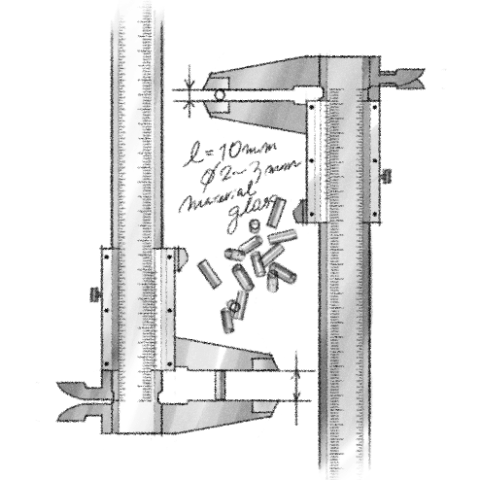We never give up
Manufacturing.
A custom product for each client: The Story of an Engineers’ Struggle


A custom product for each client: The Story of an Engineers’ Struggle

At Nagaoka Plant, we manufacture custom products for each client. Each product is one-of-a-kind, making manufacturing a tedious process.
Once, we developed a device that aligns and handles small glass tubes. The client wanted to automate tasks that had previously been done manually. The glass tubes had a diameter of 2-3mm and a length of 10mm. Using robot hands, it was difficult to gently grab and sort the tubes the way human hands would, and they ended up breaking. Then we considered, what about using suction pads that utilize vacuum pressure? When the tubes absorb the pads, there will be a slight push, which could cause them to break. Other risks could be expected, such as the tubes detaching from the suction pads during transport or the tubes breaking during detachment.
While everyone was struggling to find a solution, I was doing regular office cleaning. Suddenly, I was inspired by the vacuum cleaner in my hands.
Immediately, I started to experiment. I made a small nozzle for the vacuum with cardboard and attached it using packing tape. The extra small nozzle was necessary to prevent the small glass tube from being sucked into the vacuum cleaner. I made two or three layers of cardboard to allow air to pass through and cut the tip into a jagged mountain shape so that the glass tube would fit nicely into the groove. I turned on the power, and surprisingly, it worked perfectly.
I started working on practical prototypes. I measured the wind speed, collected data, and calculated. This time, I contracted a craftsperson to make a machined nozzle with aluminum instead of using cardboard. I replaced the vacuum with industrial blowers, which had enough suction for this purpose. The testing went well, so we successfully manufactured the machine and delivered it to the client.
However, projects do not always go as smoothly as they did in this case. For example, repair projects for old machines are always a struggle. The older the machine, the more difficult it is to repair because there is often no drawings or original information left. In these cases we begin by checking inside the machines to understand their structures before starting to manufacture new equipment.
In the case of one automation project, operators had been unconsciously adjusting the angle of their hands and other behaviors to adjust for misplaced parts of their machine, making them unaware of the issue entirely. Humans were still able to operate the machine, but misplaced machine parts would be a huge problem when automating the work.
The most challenging part was when the machine moved the objects from the transfer conveyors to an old machine. Objects were supposed to be set in two bearings at the old machine. Humans could set them without any problem, but the newly designed robotic hands could not execute the task well. Why did this happen?
As we investigated the cause, we found that two bearings attached to the old machines were not placed in the proper spots. We measured them and found a gap of only 5-6mm, which explained why they were not working properly. This small difference was unnoticeable to humans but could make automated machines unable to function. In this case, after the delivery, we continued to visit the plant to conduct maintenance regularly and adjust the old machines. This kind of customer service is the key to continuing to use old machines and fulfill the new needs of clients.
Our custom products are manufactured differently for each client. The object to be automated and the purpose of automation differ from case to case. At Nagaoka Plant, the workers discuss, prototype, experiment, and redo the process. The cycle of trial and error continues day after day.